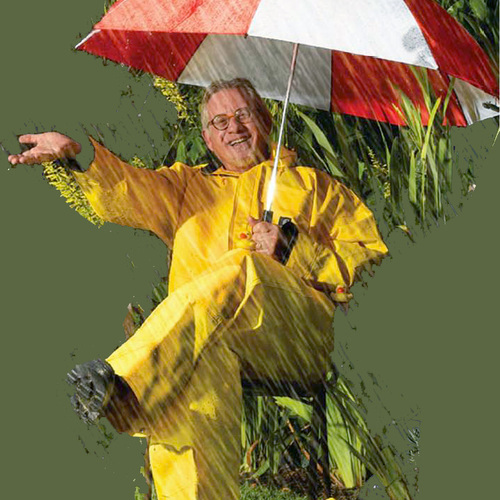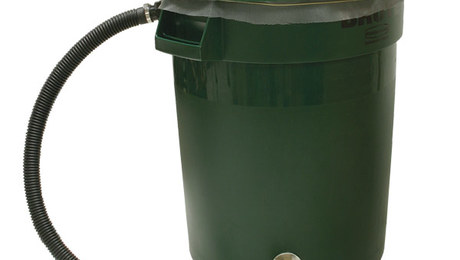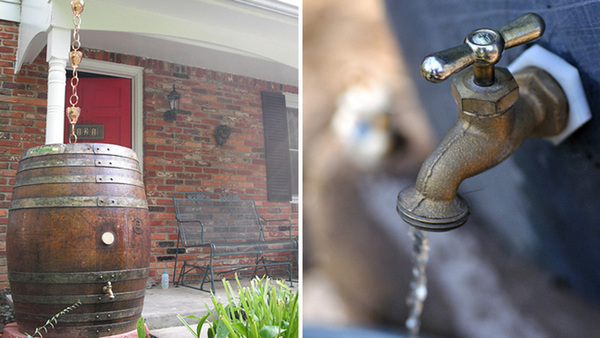
I’m a slug, not a lizard. I’d rather be under a boulder than baking on top of it. My ideal weather is the cool temps of a SoCal winter; my favorite sound is rain softly thumping on fallen leaves. That’s when I work in the garden, go for long bike rides or read old issues of Fine Gardening.
It’s too early to know if this will be a good rain year on the Left Coast, but whether Santa Barbara reaches our usual 18 inches or the stingy six of a few years back, doesn’t it make sense to take advantage of every ounce we do receive?
With all the paved surfaces that surround us, it’s amazing anything gets into the ground. Back in the heartland, you’re “winterizing” your cars. I think we’d be wise to do the same for our gardens. So here are a few things you can do to make the most of every drop that falls on your property.
Let’s start with that lawn.
Fundamental question. What does your lawn do for you? I’m not a complete anti-lawn zealot, mind you. If you’ve got kids who need somewhere to blow off some energy, or you’re trying out for the Olympic croquet team, a lawn is the only practical surface. But if you don’t use it, lose it-or at least downsize it.
Consider the monetary and environmental costs of a typical lawn. In the West, 60 percent of our residential water use is for lawns. The monthly water bill is only part of the equation: add the environmental cost of polluted run-off from fertilizers in our creeks and gas mowers that spew 10 times more emissions than a typical automobile and you can see why you might want to rethink your attachment to this big green beast.
My first choice to ease the impact of lawns is replacing it with a native mini-meadow of ornamental grasses and colorful low-growing perennials like buckwheat.
If losing your lawn gives you the shakes or threatens your marriage, at least use this time of year to assess and tune up your irrigation system. Find out if your water agency provides a water audit-they’ll help you make the most of every drop and probably lower your summer water bill. And if you like hi-tech, easy-to-use gadgets, there are inexpensive irrigation controllers that use satellite information to adjust to the weather.
It’s time to think about holiday gifts. Imagine the glee in the kids’ eyes when they unwrap that new battery-operated mulching mower! Instead of cutting the blades of grass and bagging them, these mowers chop the grass into tiny pieces and drops them back onto the turf, creating rich organic material that returns nutrients to the soil and act like mulch to reduce evaporation.
Want some other projects to make the most of winter rains? Grab a cultivator and break up the surface crust of your beds to let water soak in. Get rid of weeds that compete for water (no toxic sprays, please). Try making small soil berms along the low side of a planter to keep the rain water from flowing away.
Take advantage of the cooler weather to put a 3-inch layer of mulch on your beds. (In many areas, you can get free wood chips from your solid waste disposal folk or local tree service.) Mulch does so many good things: it protects the soil from weed seeds and reduces evaporation, and it gradually decomposes and improves the soil, breaking down clay and adding nutrients.
I’m wondering if Arthur Murray teaches rain dancing. But the big question is whether they can find a partner for a slug.

















Comments
Hey Rain Man, this was so much more fun than the usual bulleted list of water-saving tips!
Log in or create an account to post a comment.
Sign up Log in